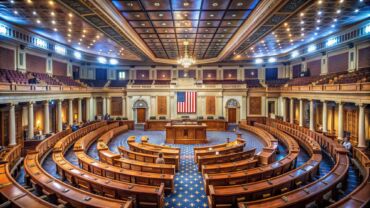PPACA; HHS Notice of Benefit and Payment Parameters for 2021; Notice Requirement for Non-Federal Governmental Plans, 45 CFR Parts 146, 149, 155, 156, and 158, 85 Fed. Reg. 29164 (May 14, 2020); HHS Notice of Benefit and Payment Parameters for 2021 Final Rule Fact Sheet
HHS has released regulations with the 2021 final benefit and payment parameters and other insurance market and Exchange-related regulations, including the 2021 annual cost-sharing limits. Although largely aimed at insurers and Exchange regulators, the cost-sharing limits and some other provisions in this diverse package of final rules may be of interest to employers and their advisors. Here are highlights:
-
Annual Cost-Sharing Limits. The maximum annual limits on cost-sharing for 2021 will increase to $8,550 for self-only coverage and $17,100 for other than self-only coverage (up from $8,150 and $16,300 for 2020).
-
Drug Manufacturer Coupons. The regulations include changes regarding how direct drug manufacturer support, including coupons, may accrue toward the annual limits on cost-sharing. Under the regulations, HHS will permit, but not require, plans and insurers to count direct support offered to enrollees by drug manufacturers for specific prescription drugs toward the annual limits on cost-sharing, regardless of whether a generic equivalent is available. However, HHS did not finalize a change it had proposed to its interpretation of the definition of cost-sharing (see our Checkpoint article), advising that it will not interpret the definition of cost-sharing to exclude expenditures covered by drug manufacturer coupons or other drug manufacturer direct support. Acknowledging that its proposed interpretation would be inconsistent with the flexibility it is seeking to provide, HHS advised that if these amounts are counted toward the annual limit on cost-sharing, the value of direct drug manufacturer support will be considered part of the overall charges incurred by the enrollee. If not counted toward the cost-sharing limit, the value will be considered a reduction in the amount that the enrollee incurs or is required to pay.
-
Medical Loss Ratio (MLR) Calculation. In an effort to lower premiums by ensuring they reflect the full benefit of prescription drug rebates, the regulations amend (effective with the 2022 MLR reporting year) current MLR rules to require insurers to deduct from incurred claims not only prescription drug rebates received by the insurer, but also price concessions received and retained by the insurer, as well as prescription drug rebates and other price concessions received and retained by any entity providing pharmacy benefit management services to the insurer.
EBIA Comment: As with the 2020 benefit and payment parameters, HHS has attempted to minimize the number of significant regulatory changes for 2021. Nevertheless, a wide range of Exchange and insurance market rules are addressed (including changes to the risk adjustment rules). There is also a new notice requirement for excepted benefit health reimbursement arrangements (EBHRAs) offered by non-federal governmental plan sponsors. Employers and advisors will want to review this collection of rules to determine the direct and indirect implications for their plans. For more information, see EBIA’s Health Care Reform manual at Sections IX.B (“Cost-Sharing Limits”), XIV.G (“Medical Loss Ratio (MLR) Requirements”), and V.F (“Excepted Benefits: Certain Health FSAs, Dental, Vision, and Others”). See also EBIA’s Consumer-Driven Health Care manual at Sections X.K (“Effects of Health Care Reform on HDHP Design”) and XXVIII.C (“Excepted Benefit HRAs (EBHRAs)”), and EBIA’s Self-Insured Health Plans manual at Section XI.E (“Trends in Self-Insured Health Plan Design”).
Contributing Editors: EBIA Staff.







